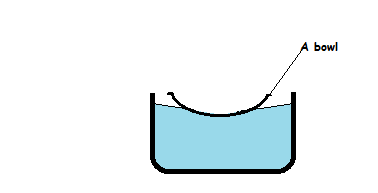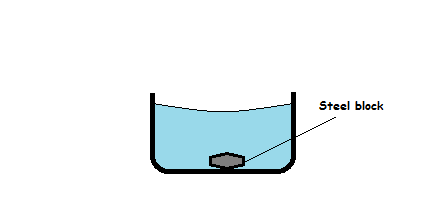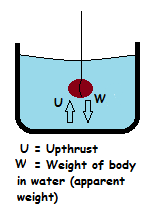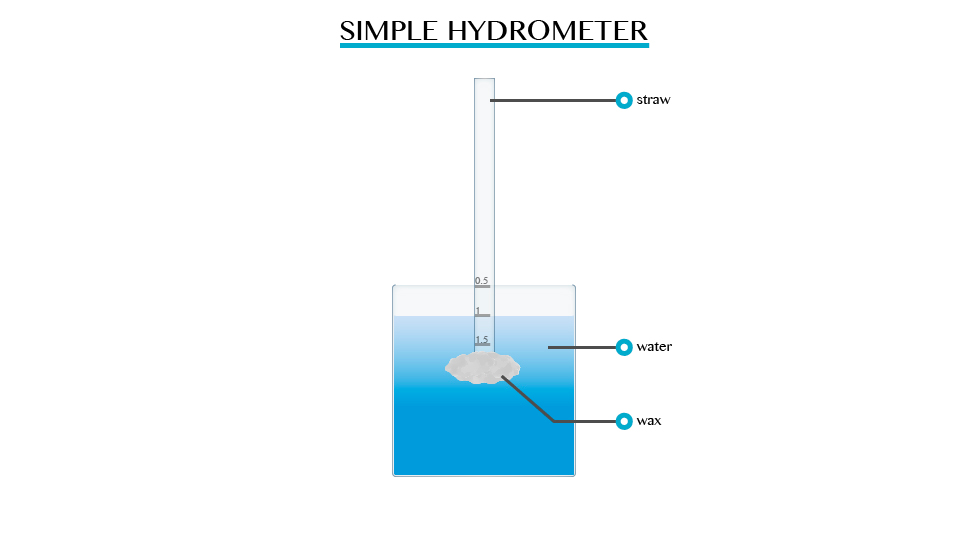TOPIC 5: ARCHIMEDES’ PRINCIPLE AND LAW OF FLOTATION
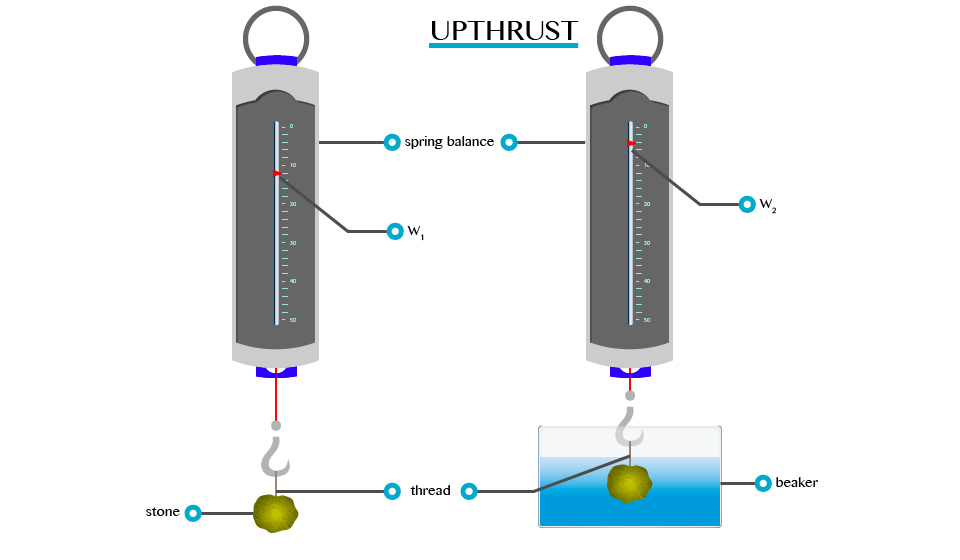
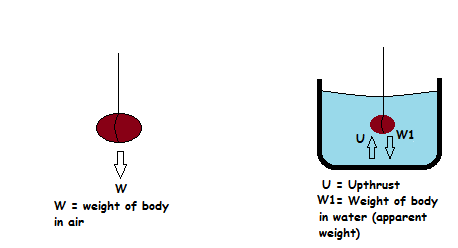








Archimedes’ Principle
Archimedes’ principle indicates that the upward buoyant force that is exerted on a body immersed in a fluid, whether fully or partially submerged, is equal to the weight of the fluid that the body displaces.
The Concept of Upthrust
Explain the concept of upthrust
If a heavy object is lifted while immersed in water, it may be raised more easily than when outside the water. This is due to the reason that when anything is placed in liquid, it receives an upward force called upthrust. A body appears to have lost some weight when immersed in water due to the upthrust exerted on the body by the water.
- By definition upthrust is referred as an upward force exerted by the body when it’s partially or totally immersed in water.
- Consider the experiment below to verity the concept of upthrust.
From this experiment, it will be observed that W1>W2. This is because:

When a body is partially or totally immersed in any liquid, the liquid exerts an upward force.
A weight recorded on the spring balance of a body that is totally or partially immersed in any liquid is called apparent weight. E.g. W2 and the force, which temporally reduces the weight of the body, are called upthrust (u).
Verification of the Archimedes’ Principle
Verify the archimedes principle
The Archimedes’ principle describes about two important things.
- A body immersed in a fluid experiences forces one of them is up-thrust
- The weight of the fluid displaced is equal to the up-thrust.
The forces acting on a body in air and when immersed in a liquid can be shown in following diagrams;

When a body is immersed in a liquid it experiences an upward force from the liquid. This force is known as up-thrust. Up-thrust opposes the weight of the body.
Since the weight of the body is opposed by the up-thrust, it follows that the weight of the body when in the liquid (W1) is decreased and become smaller than the weight of the body in air (W).
The differences between weight of the body in air and the weight of the body in the liquid (Apparent weight) is known as Apparent loss in weight (W2).

This apparent loss in weight (W2) is equal to the weight of the liquid which is displaced after immersing the body.

Therefore,

Hence it can be shown that,

Activity 1
Aim; Aim of this activity is to verify Archimedes’ principle.
Apparatus;
- Spring balance
- Digital /beam balance
- 1 beaker
- Eureka can
- water
- 1 piece of small stone
- A cotton thread a string
Procedure;
- Measure the weight of empty beaker (Wb) using beam/ digital balance.
- Fill the eureka can with water until water to starts to fall out of its beak.
- Attach the stone to the spring balance to measure its weight by using a cotton thread /string.
- Record the weight of stone in air as W.
- Place the empty beaker under the beak of the Eureka can.
- Slowly immerse the stone in the water and observe the changes the readings of the spring balance.
- Water will be displaced and collected by the beaker.
- Record the apparent weight of the stone (weight of the stone in water) as W1.
- Put the beaker with displaced water on the digital balance to measure the weight of the beaker +water =Wbw .
Discussion;
- Weight of the water displaced (Ww) can be obtained by taking (weight of beaker + weight of displaced water) –weight of empty beaker=WbwWb. Ww=Wbw-Wb
- Apparent loss in weight (W2) of the store can be obtained by taking weight of store in air –Apparent weight =W-W1
Questions;
- Are the values Ww and W2 equal?
- What is the Upthrust experienced by the stone?
Example 1
Weight of a body in air = 10.0N
Weight of a body when immersed in water = 9.2N find the upthrust.
Solution:
Data given
Weight of a body in air (W1)= 10.0N
Weight of a body when in water (W2) = 9.2N
Formula
Upthrust = Loss of weight in water = W1-W2
= 10.0N – 9.2N
= 0.8N
The upthrust is 0.8
Example 2
The weight of a body when totally immersed in liquid is 4.2N. if the weight of the liquid displaced is 2.5N, find the weight of the body in the air.
Solution;
Data;
Apparent weight (W2) = 4.2N
Weight of liquid displaced (u) = 2.5N
Weight of body in air=?
Formular;
U = W1 –W2
W1= 4.2 +2.5 = 6.7N
Weight of body in air is 6.7N
The Archimedes’ Principle in Determining Relative Density
Apply the archimedes principle to determine relative density
Relative density (R.D) of a substance can be defined as the ratio of the mass of a substance to the mass of an equal volume of water.

Relative density can also be defined as the ratio of the weight of the substance to the weight of an equal volume of water.

According to Archimedes’ principle mass of equal volume of water is the mass of the water displaced when the substance is immersed in water.
Note that, the volume of water displaced after immersing a substance in water is equal to the volume of the substance.
That means,

Or,

Example 3
A piece of glass weigh 1.2N in air and 0.7N when completely immersed water. Calculate its:
- Relative density
- Density of a glass
Given that density of water = 1000kg/cm3
And acceleration due to gravity = 10N/kg
Solution
Weight of the glass in air (W1) = 1.2N
Weight of the glass in water (W2) = 0.7N
R.D = W1/W1 – W2
1.2N/(1.2 – 0.7)
1.2/0.5
R.D = 2.4
R.D = Density of glass/Density of water
Density of a glass = R.D x Density of water
= 2.4 x 1000kg/cm
= 2400kg/m3
NB: Relative density has no SI unit
Law of Flotation



